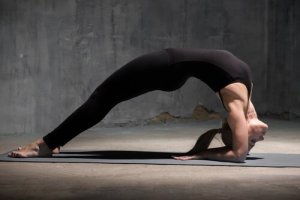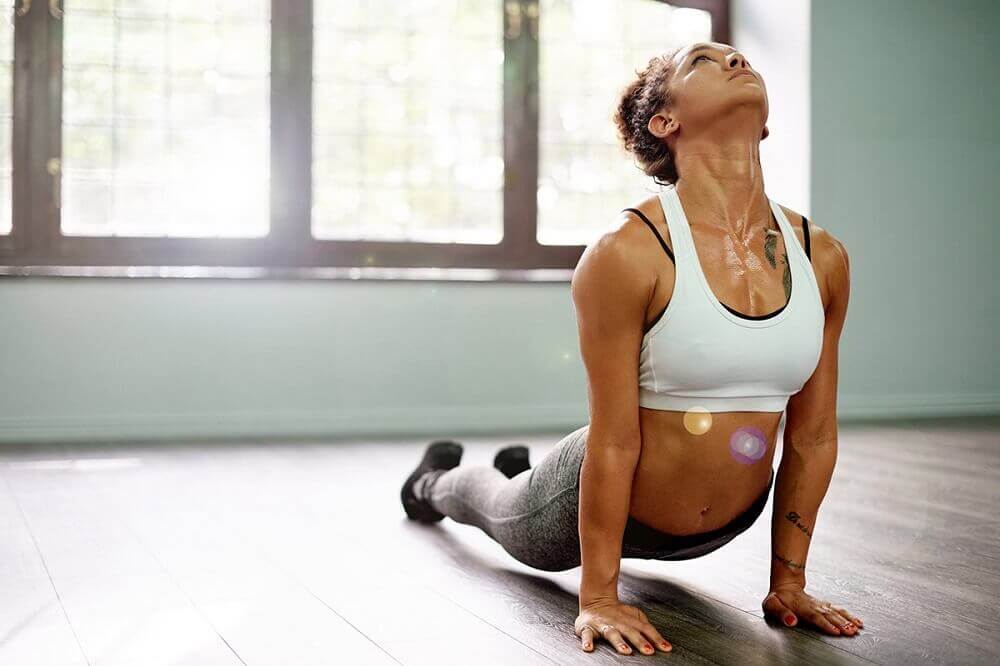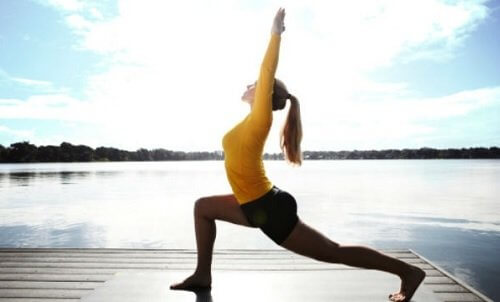Four Yoga Poses to Restore Your Energy


Reviewed and approved by the pedagogue in physical education and nutritionist Elisa Morales Lupayante
If you’re looking for an integrated training where your body and mind connect, yoga might be perfect for you. Body control, strength, and energy are some of the benefits you’ll get from practicing it. But what are the best yoga poses to restore your energy?
Yoga comes from India, and was developed for physical and mental discipline. The main objective is to achieve a mind-body balance. Like all physical exercise it requires bodily effort, although the most important aspect is dominating the mind to achieve spiritual well-being.
We could list many benefits of yoga but the main ones are emotional stability, relaxation, and energy. There are several types of yoga that exist. Today we’ll focus on hatha yoga, a blend of physical yoga and meditation.
What are yoga poses?
Also known as asanas, yoga poses are exercises that unite the body with the mind. Although some might seem easy, each one of them has a different level of difficulty. You have to be attentive and control your mind and body at the same time.
There are many different yoga poses and each benefits a specific part of the body. Some help correct problems like scoliosis, others increase flexibility, and still others alleviate pain.
These poses can be perfected with a lot of practice and patience. Even the best yoga practitioners take years to master their technique.
What are the best poses to restore your energy?
Yoga generally always helps fill you with mental and physical energy. The following four poses will definitely recharge you, however. We recommend that you practice them often:
1-Downward facing dog
This is the most common yoga pose and an ideal one for beginners. It involves setting your body in an inverted V shape. It doesn’t require a lot of physical effort but to maintain your balance you do need good posture.
How do you do it?
- Stand on a yoga mat and place your hands on the mat beneath your shoulders with your knees hip-width apart. Be sure you keep your back straight.
- Support yourself on your hands and feet in this pose.
- Take a deep breath, straighten your knees, and lift your hips as high as you can. Try to keep your heels pressed to the mat and hold this position for 10 seconds.
- Lower your hips and return to the starting position while exhaling.
Benefits
- Releases tension and stress
- Strengthens the bones and muscles
- Improves flexibility of shoulders, hips, and arms and legs
- Improves digestion
2-Upward facing dog

How do you do it?
- Begin face down on a yoga mat. Breathe deeply and hold your breath.
- Lift your knees off the mat and press the upper part of your body upwards.
- Your arms should be fully extended with your hands below your shoulders. Arch your back and look up.
- Hold this position for 10 seconds and then relax.
Benefits
- Strengthens the muscles of the arms, shoulders, wrists, abdomen, waist, and chest.
- Tones the glutes
- Improves the flexibility of your spine
- Opens the chest more, increasing lung capacity
3-Warrior pose
Like the dog poses, there are three variations on the warrior pose. This yoga pose was inspired by Virabhadra, an ancient warrior from India who arose from the suffering of Lord Shiva after the death of his wife.
How do you do it?
- Stand on a yoga mat and stretch your back. Inhale for five seconds, hold your breath for another 10 seconds, and exhale for 10 seconds.
- Separate your feet and lift your arms into the air.
- Take a big step forward with your right leg.
- Lean over your right leg until you reach a 90-degree angle. Be sure to keep your back straight and hold this position for 10 seconds, before returning to the original position.
Benefits
- Strengthens the legs and glutes
- Builds strength
- Increases balance and stability
- Relieves pain in certain parts of the body
 4-Sasavana, or corpse pose
4-Sasavana, or corpse pose
This is the easiest yoga pose from a physical perspective, but what makes it truly difficult is the mental effort it requires. The goal of this pose is to be totally relaxed and achieve a meditative state.
You have to minimize your mental activity to perform this pose, forget about any distractions, and deepen your breathing.
How do you do it?
- Lie on your back on a yoga mat with your legs hip-width apart.
- Rest your arms slightly away from the body. Your head should be centered and your spine aligned, palms up with relaxed fingers.
- Concentrate on breathing deeply to release muscle tension and stiffness.
Benefits
- Alleviates headaches
- Fights fatigue and insomnia
- Lowers blood pressure
- Relieves mild depression
These and other yoga poses will give you a good dose of energy if you practice them daily. Start by tuning your mind and body and you’ll see the positive changes in your life. Don’t focus on worries – relax and take action to improve your quality of life. You’ll find out that it’s worth it!
This text is provided for informational purposes only and does not replace consultation with a professional. If in doubt, consult your specialist.








